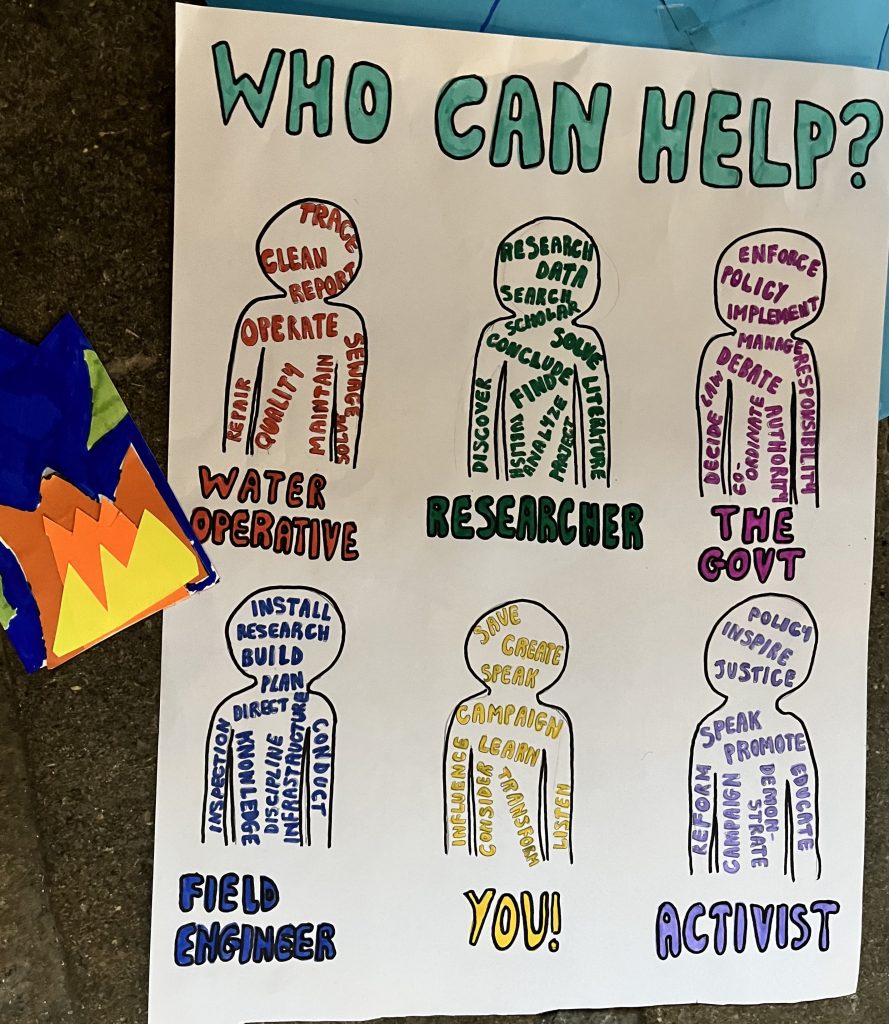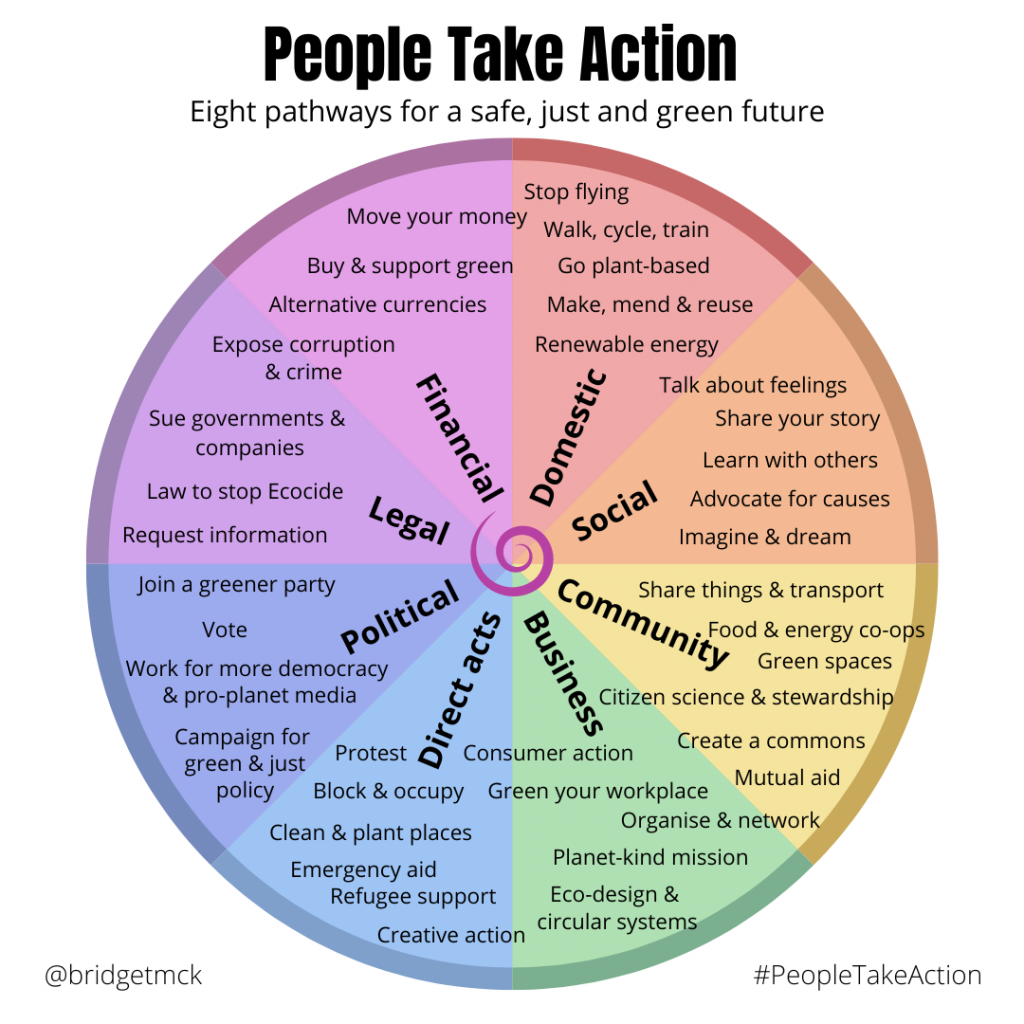
Activation not just communication
It can add to young people’s anxiety if we simply inform them about problems worsening on the horizon. We need to design interactions to enable young people to improve their lives and change the system to gain even more agency, which means interactions have to be trauma-sensitive, enjoyable, equitable and aiming to increase their efficacy. In Climate Museum UK, we focus on creating ‘activations’ rather than messages, lessons, shows or content.
Here are some of the challenges of doing this work:
- The unfolding impacts of the Earth crisis create shocks to our places and to the social and economic systems that our lives and organisations depend upon. See Covid-19 for example.
- There is a particular challenge in designing experiences for young people because absorbing new knowledge of the depleted state of nature and threats to humanity’s future is very traumatic. Traumatic experiences can be overwhelming in physical and mental intensity for people living with trauma within their own lives, and / or who have not reached cognitive maturity.*
- Adults caring for and educating children need support to protect and inspire children, and to act on their behalf too, so the programming must be intergenerational in design. Programmes are often designed to use children as an emotional Trojan Horse to affect adults’ choices, but care should be taken not to pigeonhole or burden young people in this role.
*An adult state of cognitive maturity can be reached by age 16, but psycho-social maturity can take years longer. Also, cognitive development continues into and through old age, so it is an ongoing process. The hormonal intensities of early adulthood, compared to older people, can lead to over-arousal and burn-out.
Below are some interaction methods with young people that enable them to participate actively, express views and contribute to the design of experiences.
Conversations are at the heart of such interactions, rather than educating or ‘speaking to’ people. See this Climate Museum UK guide with many ideas on Creative Climate Conversations.
See the resource from Thoughtbox on being Brave, Safe and Connected in having conversations about the environment.
Trauma sensitive: interactions need to be: supportive and compassionate; democratic and transparent; accepting of emotion; giving choices, with no coercion; decoding and defusing beliefs and systems that cause trauma; not rushing, but making time for voices. [Could do a graphic for this]
Start with emotions to develop coping strategies. See ‘Hold This Space’ for young people to navigate climate emotions, to imagine and create manifestos for change. And see our guide to Climate Coping Strategies, with illustrated cards to stimulate discussion.
Co-design and co-creation: good practice includes young people leading the design of climate spaces. For example, see Climate Home at the Albany, by youth arts collective Sounds Like Chaos. Or, the Objects Declare Emergency project led by the youth panel of Kids in Museums.
Listening as the first step: Professor Julia Steinberger, wrote a blogpost ‘The kids are not ok’ about lessons from speaking to some school children about climate. She says she should have listened to them first, heard their despair and asked them why they feel betrayed. She applied the lesson to her undergraduate teaching, and they got into subjects that would most leverage systemic change.
Balancing factual and metaphorical information: very scientific information can be too abstract and not relevant to real lives and places whereas, on the other hand, artistic content such as metaphors, stories and expressive gestures can sometimes be superficial or simplistic, or confusing. We as artists, educators and activist communicators need to work on getting the combination and the balance right, according to the audience, the situation and the ideas we’re trying to convey.
Resources for young people to learn and act
- Atlas of the Future is full of real stories of ecological innovation all over the world
- Climate Museum UK guide to the Global Goals, or Sustainable Development Goals, linking to latest research and outlining creative learning ideas.
- Doughnut Economics, a model for providing a safe, just space for humanity within the operating limits of the planet.
- Degrowth means transforming societies to ensure environmental justice and a good life for all within planetary boundaries. This requires radical redistribution, reduction in the material size of the global economy, and a shift in common values towards care, solidarity and autonomy.
- This animated film is one of the best for summing up the Great Acceleration of human consumption, how we became Energy Blind, and the need for a Great Simplification.
- Green World Rising: short accessible films including one on Restoration
- Be inspired by this brilliant Power Pack on Climate Justice, for young people, from the Serpentine Galleries.
Networks and movements young people can join
- The Global Youth Biodiversity Network
- Fridays for Future
- The UK Student Climate Network
- Action for Conservation, youth-led campaign
- Students Organising for Sustainability
- People and Planet – the largest student network in the UK campaigning for social and environmental justice.
- InterClimate Network – climate action toolkit for secondary students & teachers
- Earth Day’s Climate & Environmental Literacy campaign aimed at young people
- Thoughtbox Education – Courageous Conversations has three principles for young people to deal with the Earth crisis – being Safe, Brave and Connected.
And here is a big collection of networks and campaigns for nature and climate.
People Take Action
This model and toolkit offers eight pathways for people to take action on the Earth crisis in any area of influence they have. It aims to expand thinking about what action is possible. It sees all actions as ‘personal actions’ within our blended lives as consumers, friends, citizens and workers. The toolkit contains lots of images and ideas to run workshops and activate people, around this diagram, and has a link to downloadable assets such as slides. There is a version of the diagram for young people, which shows they have much less power than adults. Where they can’t act, they can only speak.
